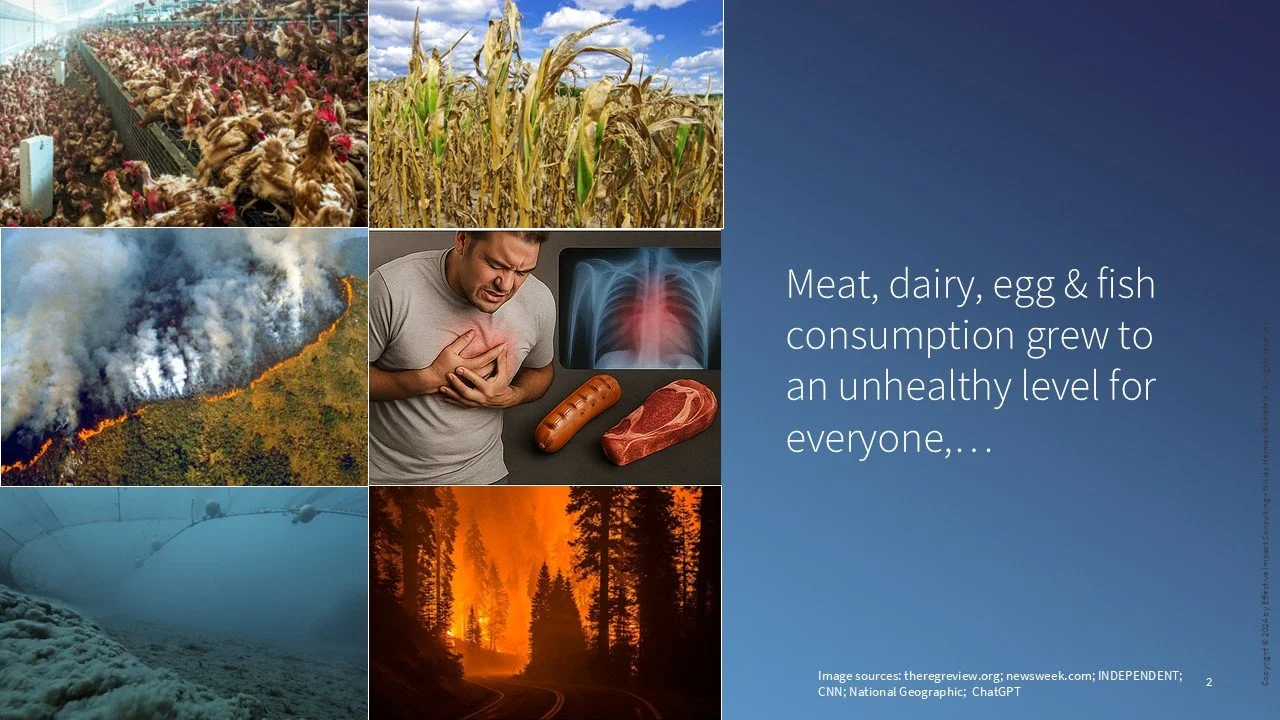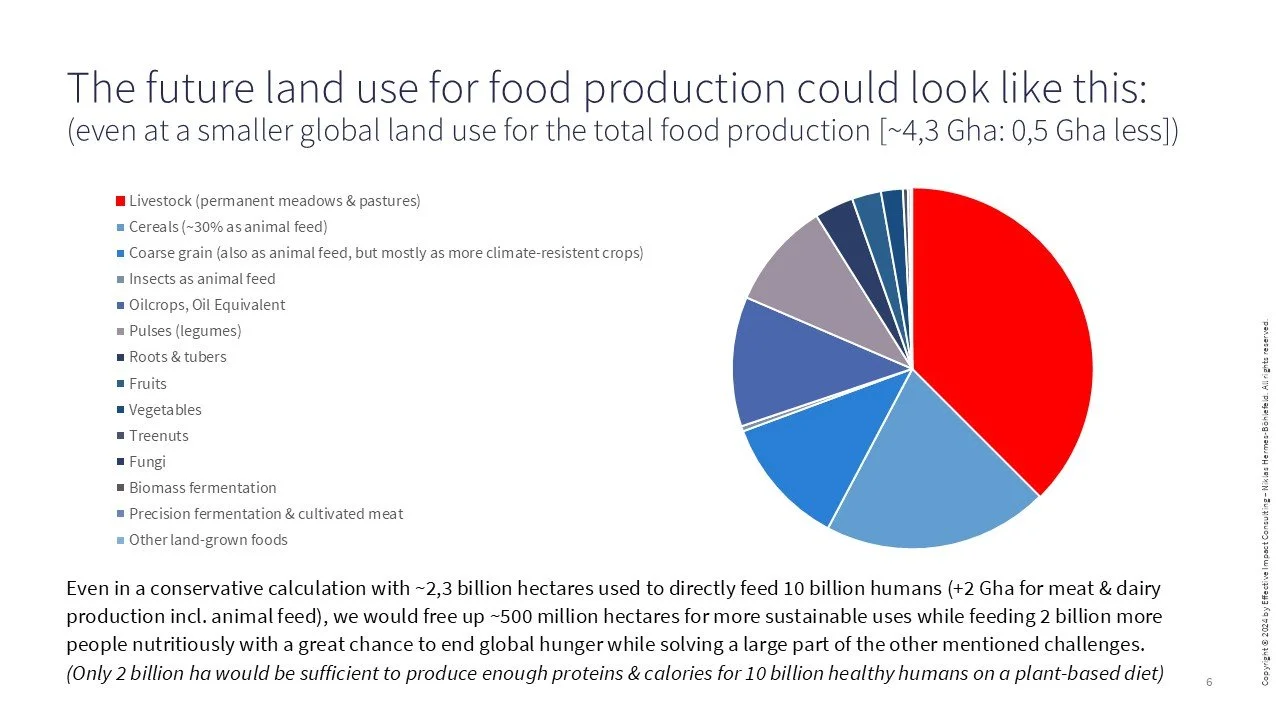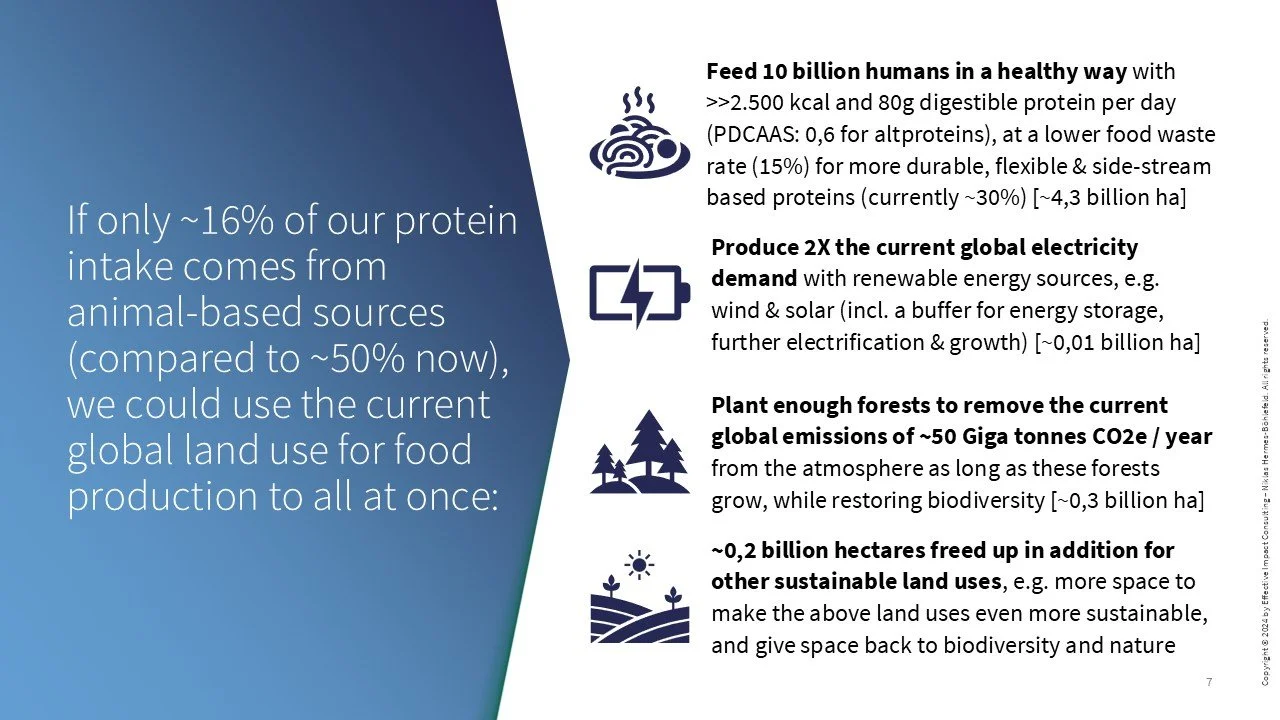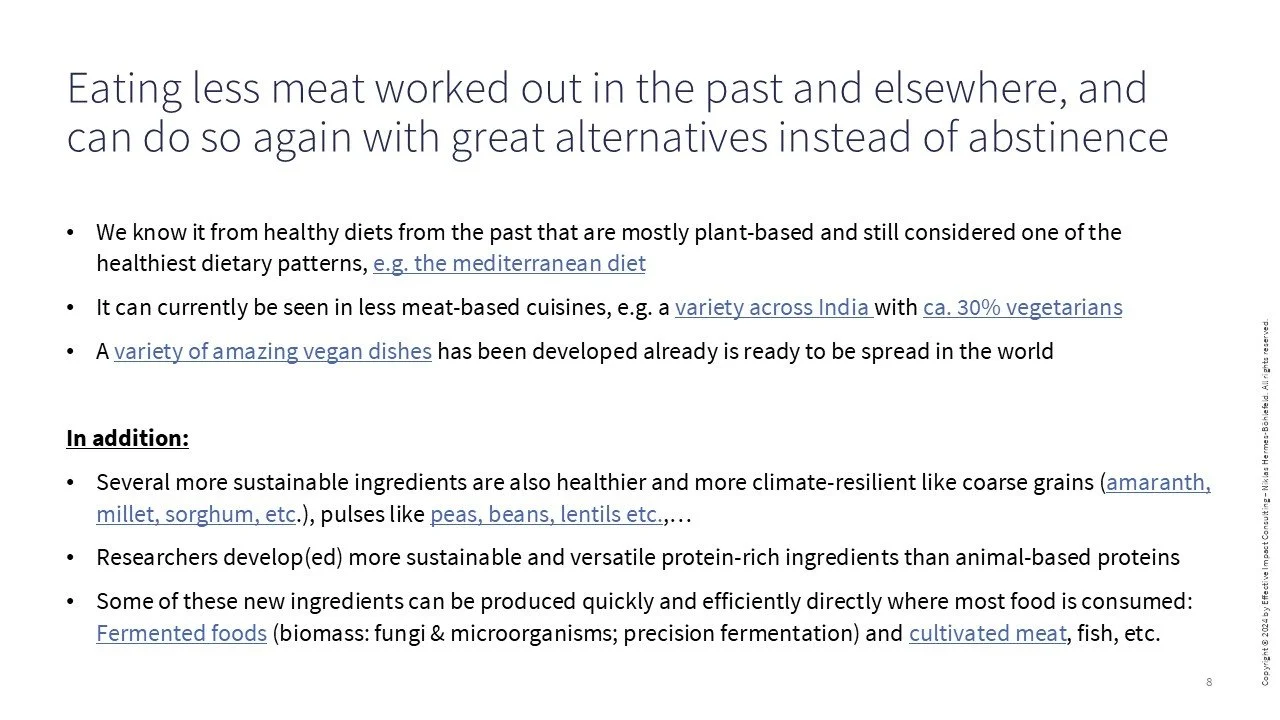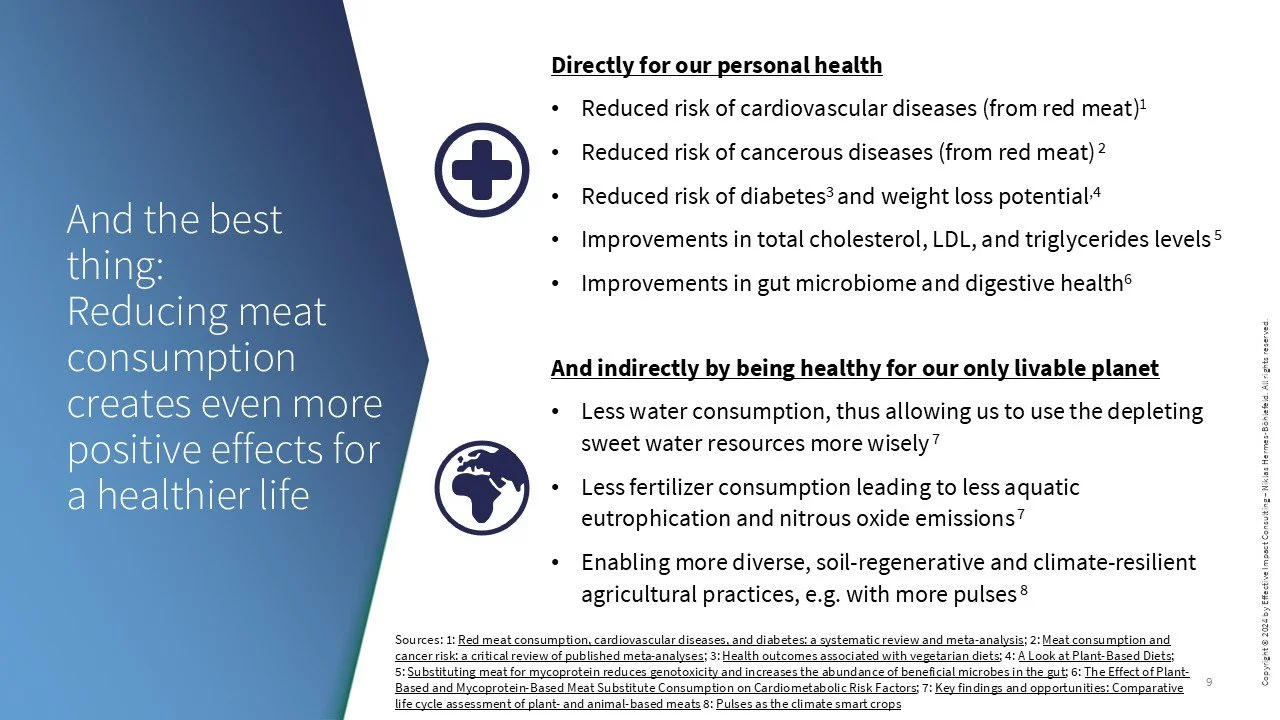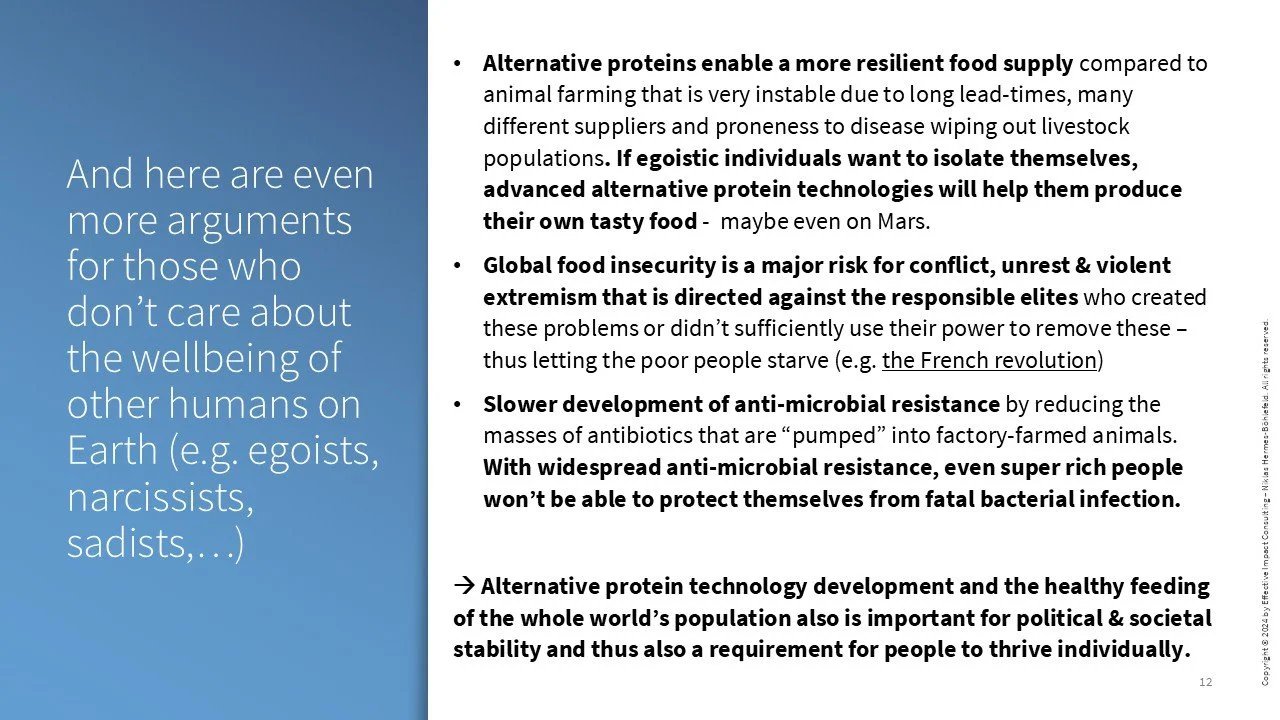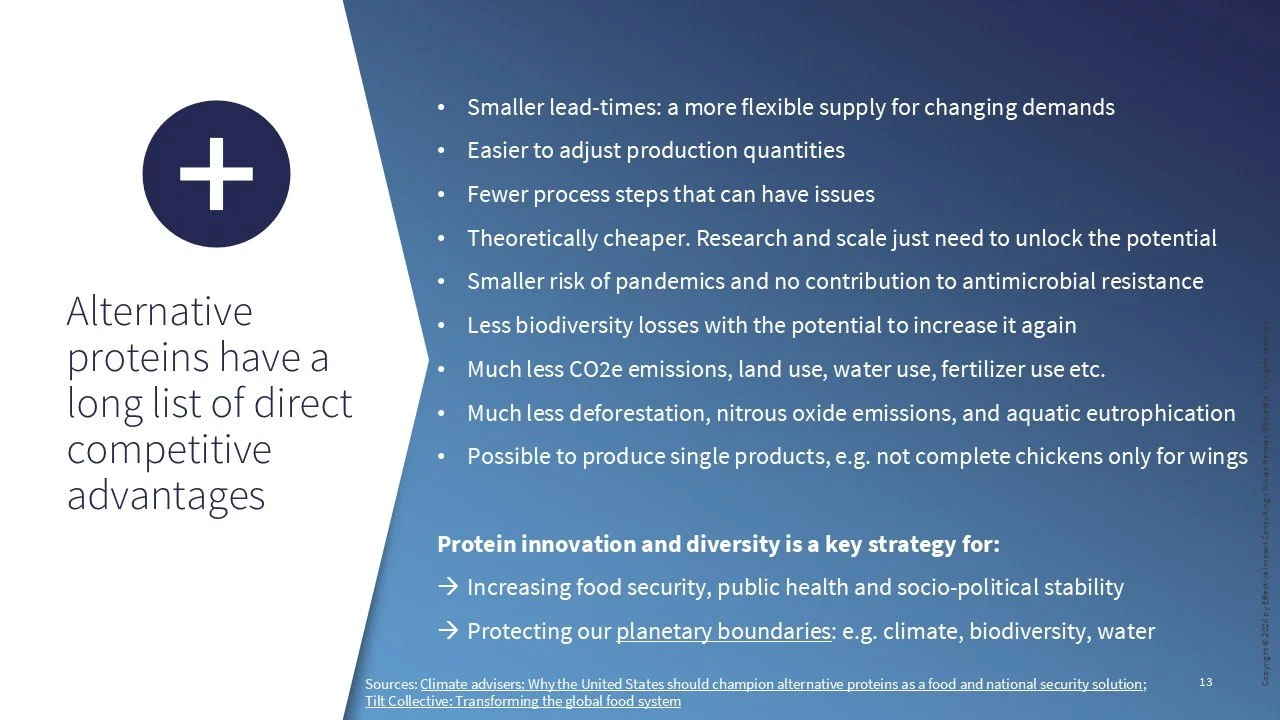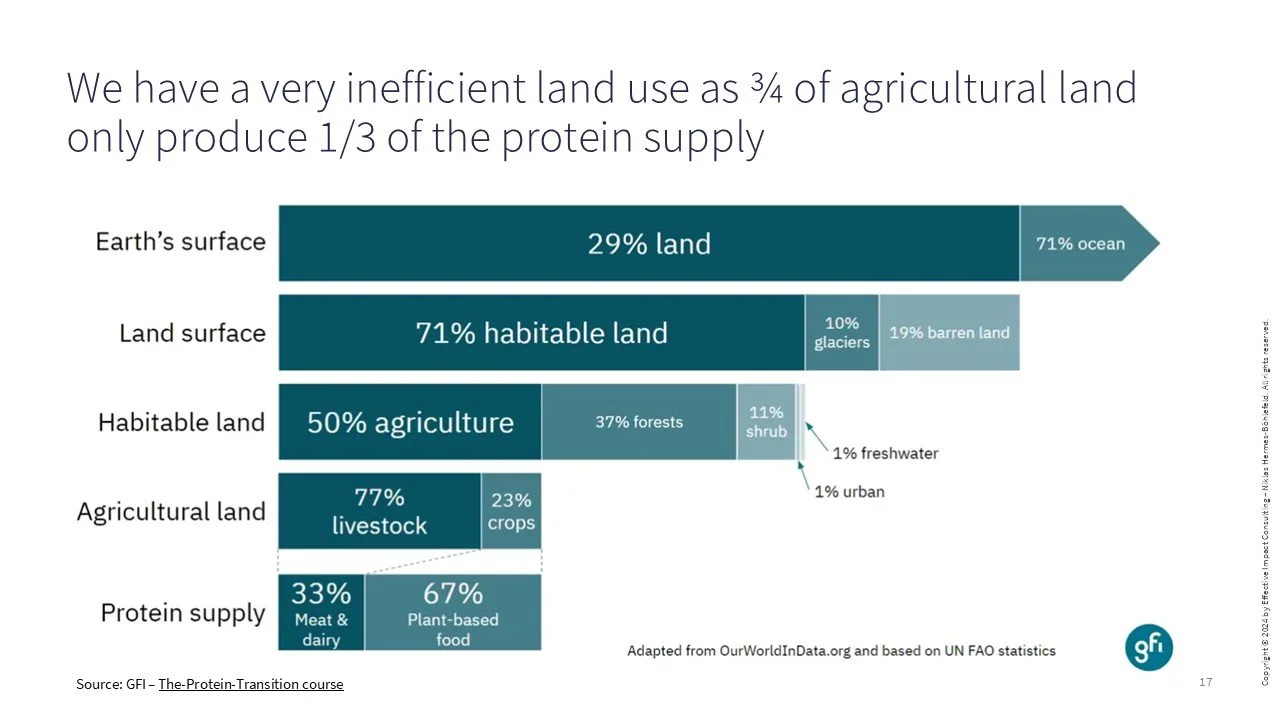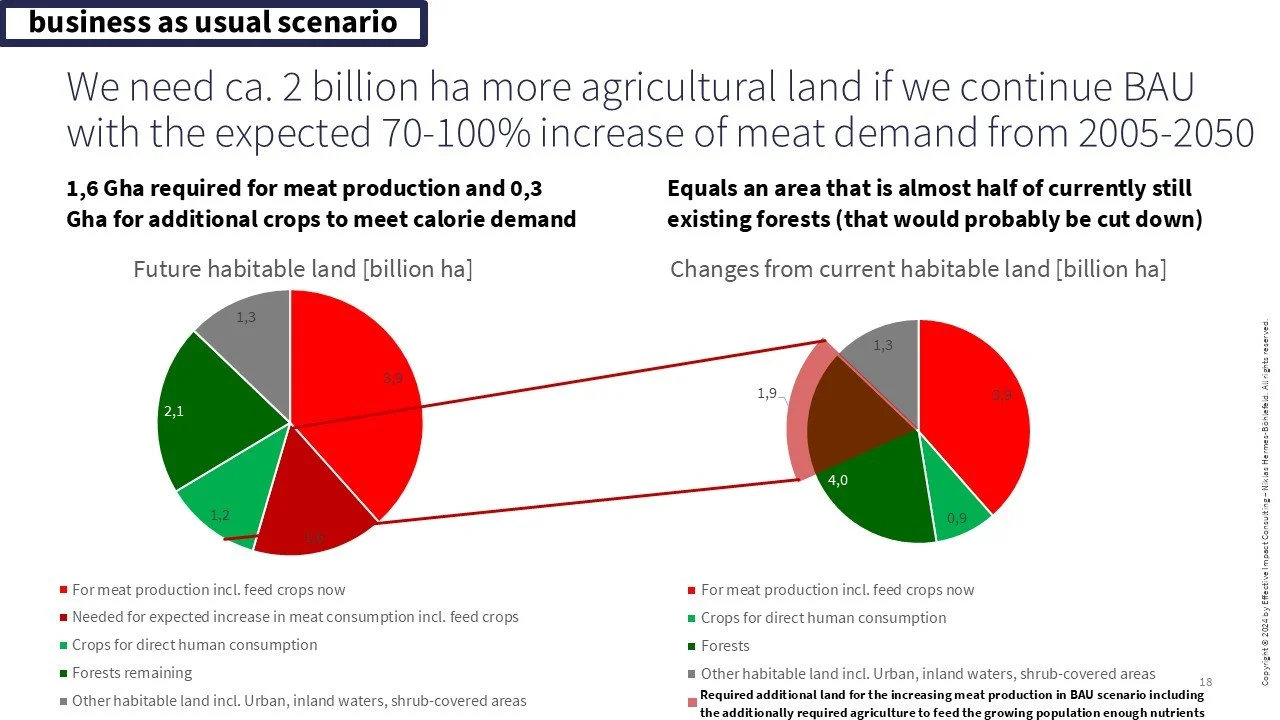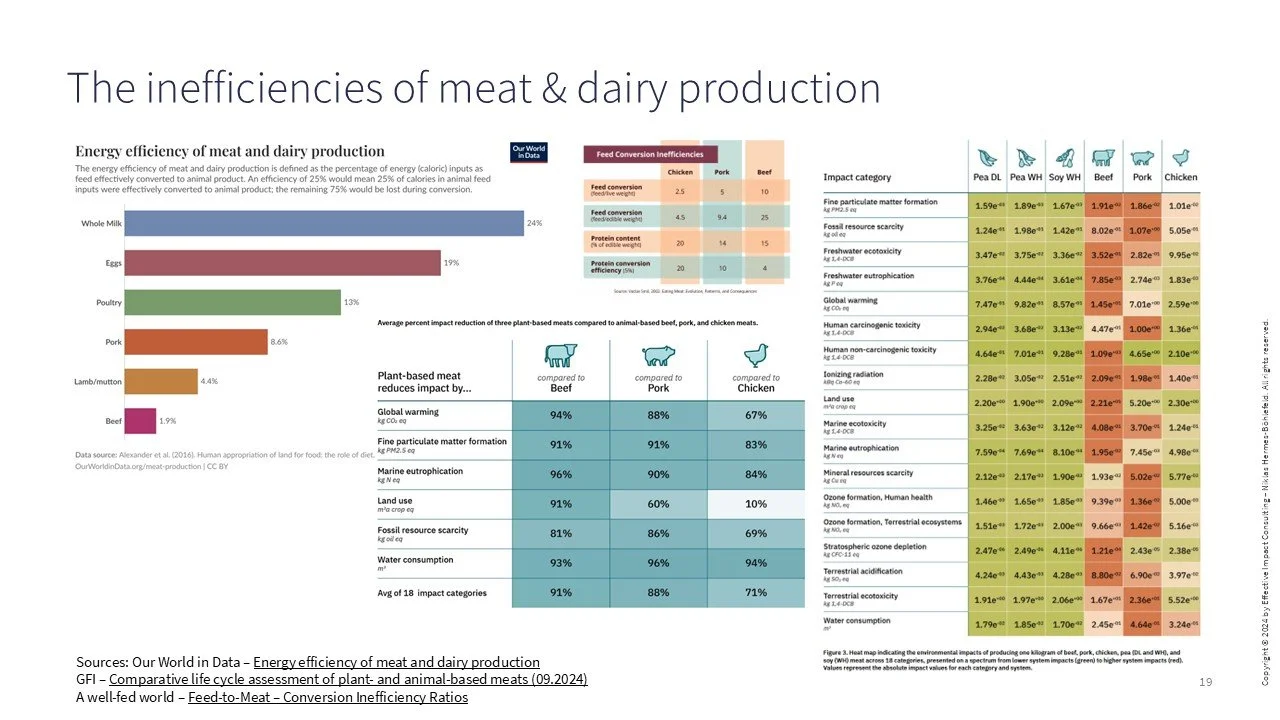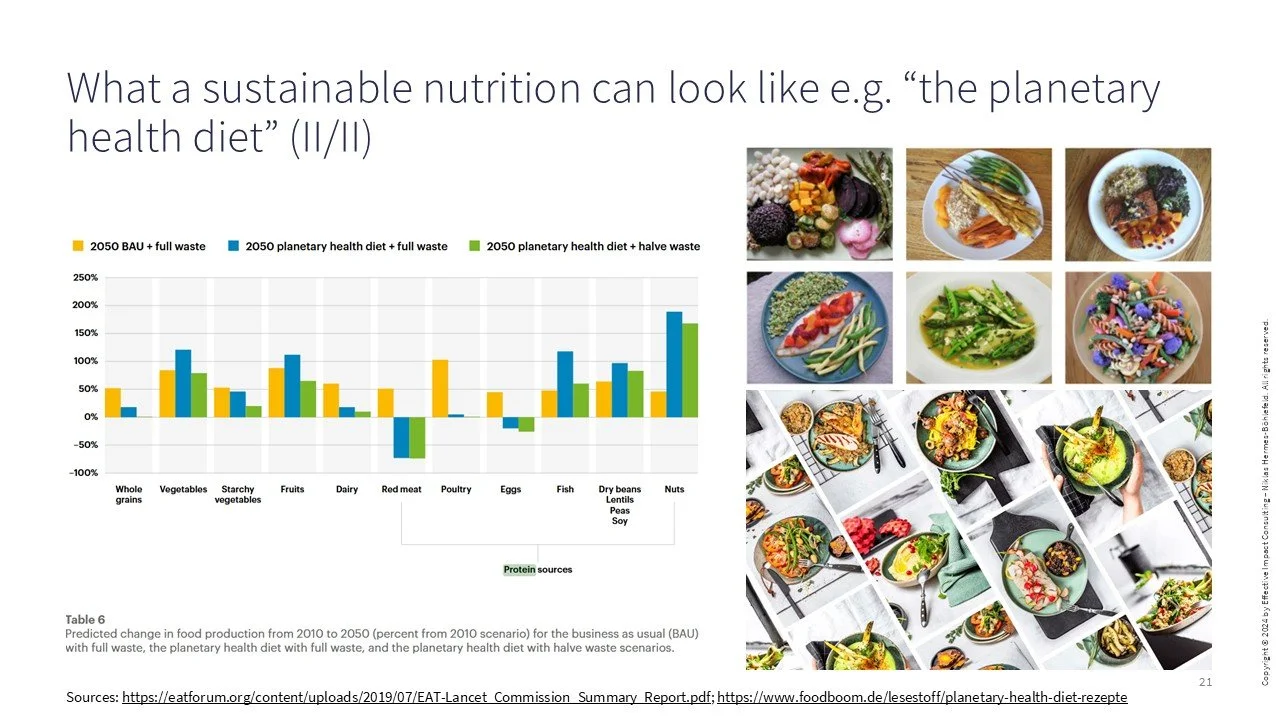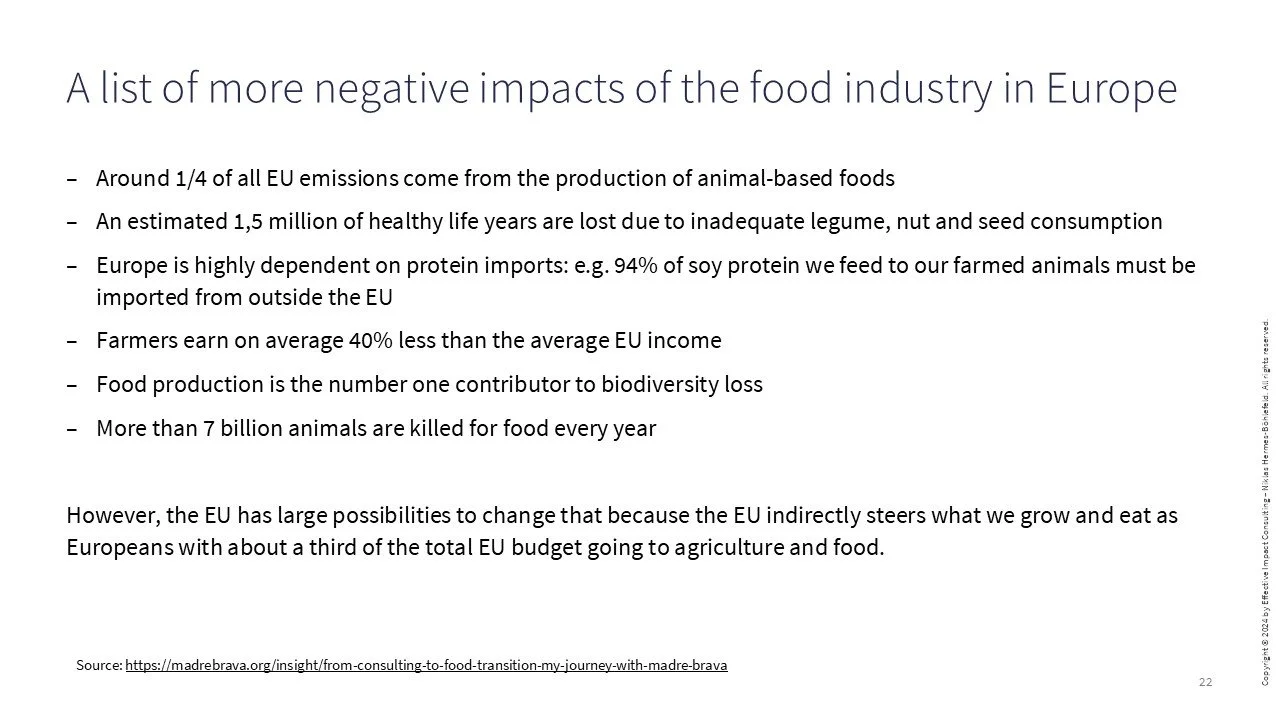My motivation for the food transition
A surprising way to "easily" bring the world to net zero by reducing emissions and removing CO2 is…
… reducing meat & dairy consumption, because livestock farming is a very inefficient way to produce food.
If you want to understand what motivates me to find the most effective ways to drive the food transition – or find arguments that motivate you and the people and organizations around you to do their part, check out the attached presentation.
I felt the urge to share a summary presentation why I’m so interested in establishing a more sustainable nutrition and I decided to do so by showing the following theoretical, but tangible scenario based on a land use objective for our Earth:
𝗜𝗳 𝘄𝗲 𝗵𝗮𝗹𝘃𝗲 𝘁𝗵𝗲 𝗰𝘂𝗿𝗿𝗲𝗻𝘁 𝘁𝗼𝘁𝗮𝗹 𝗺𝗲𝗮𝘁 & 𝗱𝗮𝗶𝗿𝘆 𝗰𝗼𝗻𝘀𝘂𝗺𝗽𝘁𝗶𝗼𝗻, 𝘄𝗲 𝗵𝗮𝘃𝗲 𝗲𝗻𝗼𝘂𝗴𝗵 𝘀𝗽𝗮𝗰𝗲 𝘁𝗼:
🍛 Feed 10 billion humans in a healthy way with sufficient nutrients:
80g digestible protein (at an average PDCAAS of 0,6 for alternative proteins) and possibly >2.500 kcal per day; with a reduced food waste rate of 15% for more durable protein sources that can be produced quicker and more flexible, and are often based on side streams from other food productions (currently ~30% food waste) [~4,3 billion ha]
🔋Produce 2X the current global electricity demand with renewable energy sources, e.g. wind & solar (incl. growing demand) [only ~0,01 billion ha]
🌳Plant enough forests to remove the current global emissions of ~50 Giga tonnes CO2e / year from the atmosphere as long as these forests grow, while creating an opportunity to restore biodiversity [~0,3 billion ha]
🏞️~0,2 billion hectares freed up in addition for other sustainable land uses, e.g. more space to make the above land uses even more sustainable, and give space back to nature (ca. the size of Mexico or Saudi Arabia)
𝗜𝗻 𝗮 𝗕𝗔𝗨 𝘀𝗰𝗲𝗻𝗮𝗿𝗶𝗼 𝗮𝘀 𝗰𝗼𝗺𝗽𝗮𝗿𝗶𝘀𝗼𝗻, 𝘄𝗲 𝘄𝗶𝗹𝗹 𝗻𝗲𝗲𝗱 𝘂𝗽 𝘁𝗼 𝟮 𝗯𝗶𝗹𝗹𝗶𝗼𝗻 𝗵𝗮 𝗺𝗼𝗿𝗲 𝗹𝗮𝗻𝗱 mostly (>80%) for meat production (meadows & pastures and animal feed crops), if we let business as usual continue and meat demand increase as expected by 70-100% until 2050 (compared to 2005).
These 2 billion ha equal approximately:
- Half of the forests that still exist on Earth (that would probably be cut down)
- One third of the remaining habitable land that is not used for agriculture yet
- All of North America (Canada & USA)
But with the current food waste of ca. 30% we still wouldn’t have enough proteins to feed all soon to be 10 billion humans with a nutritious diet in this BAU scenario.
𝗔𝗻𝗱 𝘁𝗵𝗲𝗿𝗲 𝗮𝗿𝗲 𝗺𝗼𝗿𝗲 𝘂𝗻𝘁𝘆𝗽𝗶𝗰𝗮𝗹, 𝗯𝘂𝘁 𝗴𝗼𝗼𝗱 𝗮𝗿𝗴𝘂𝗺𝗲𝗻𝘁𝘀 𝘁𝗼 𝗱𝗿𝗶𝘃𝗲 𝘁𝗵𝗲 𝗳𝗼𝗼𝗱 𝘁𝗿𝗮𝗻𝘀𝗶𝘁𝗶𝗼𝗻 and establish alternative proteins because they have for example:
➕ Smaller leadtimes and a more flexible supply chain with less steps for changing demands
➕ Much less CO2e emissions, water use, fertilizer use etc.
➕ Much less nitrous oxide emissions, aquatic eutrophication and other biosphere risks
➕ Smaller risk of pandemics and less contribution to antimicrobial resistance
I’ve put these and many other benefits and thoughts in the attached presentation.
❓What could motivate you and your peers to reduce meat and dairy consumption? Which argument from the presentation surprised you most?
Contact me if you would like to take a look at the Excel with the land use calculations :)

